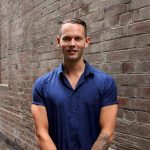
Apr 1, 2016
We met Bevan Blackie, Head of Software Development at ansarada, to discuss his career and how they are making M&A easier for their customers.
Bevan, let’s start from the very beginning of your career, how did you get into software development?
The Father of a friend was a software developer. I remember watching him code and thinking that software can accomplish amazing things. From that time on, I have been hooked.
Can you tell us about the biggest challenge you encountered in your career?
It’s probably been during my time here at ansarada. I have progressed from being hands on, to a team lead role and then to a senior leadership role. My focus is now on coaching and mentoring other leaders, growing the team while tackling the challenges of a fast growing business. Throughout this time, I’ve had to become used to being comfortably uncomfortable given the consistent personal growth required to be successful.
What’s the biggest challenge in software development today?
I couldn’t give you one, but three.
Firstly, getting the right balance between addressing technical concerns and continuously delivering value to customers. There are smart ways to do both, but it is still a constant challenge.
Secondly, we work in an industry where things are moving quickly so keeping your skills up to date is definitely another.
Lastly, understanding your customers. We are employed to solve problems for people, so we really need to understand them to be effective.
Was there ever a moment in which you wanted to give up?
There have been days when our customers were impacted due to a long product outage which was obviously discouraging. I can’t say I’ve ever wanted to give up during these tough times; I tend to focus on what the team and myself can learn and do better in the future. I would also say that such challenges can be inspiring because you get to see how amazing the team around you us. I often say to myself “the night is darkest before the dawn”.
What about the best moment in your career?
One of the best ones was here at ansarada when we completed the migration of our entire product into Amazon Web Services. It took almost a year of work and when we finally switched over, there was lots of champagne and high fives. It was an awesome time.
More and more small businesses are moving into the Cloud, for many companies this it can be scary. Do you think the Cloud is the right move for everybody?
Throughout my career, I have worked for some traditional financial organisations, and I recall there being a lot of resistance towards Cloud computing. There was a lot of fear mongering which wasn’t factual. The reality is that the private data centres of most companies are far less secure. Cloud computing service providers have the scale to invest a lot more into sophisticated security mechanisms and practices. I don’t see a lot of downsides for anyone.
We invest a lot in security, for example, most of the team at ansarada are trained as hackers.
What kind of technologies do you like to use during your day?
In my spare time I’m learning the functional programming language F# and using it alongside various machine learning frameworks. I also still enjoy learning about different ways to design and build Microservices.
What advice would you give to younger people who would like to get involved in software development?
Don’t wait to go to University; you can start today. There are so many resources on the internet to help you learn. Also, meetups are a great resource as you can meet other people who are on the same journey. Don’t expect to create the next Facebook overnight; start simple and take the small victories. If you’re passionate about it, you’ll be great.
One other thing. There might be someone who is reading this who has taken another career path that they’ve realised isn’t for them. They might also be thinking it’s too late to change, but it is not. We have a team member here, Amy, who used to be a journalist for the ABC and is now a developer. We also have another person who is about to join us who started her career as a lawyer. If you’re passionate, you’ll find a way to succeed.
What makes your product stand out?
One of the biggest things for us has always been sophisticated simplicity. Our customers are often very stressed and time poor. Given this, we don’t want them to be feeling stressed when using our product. We focus on delivering a product that’s extremely powerful, while easy to use. We often remind ourselves that we want our customers to be spending more time with their families and less time in the office. Our product has a huge amount of complexity going on in the background, so it is a constant challenge to shield that from our customers.
What part of the product are you proud of the most?
I think that comes back to what I was saying about simplicity. We often hear great feedback from customers telling us about the positive impact our product is having. It’s good to know our hard work is paying off for them.
Was it a difficult process to reach that level of simplicity?
It takes more time to build something that is simple rather than complex. This reminds me of a quote from Blaise Pascal, “I would have written a shorter letter, but I did not have the time”. Simplicity is the result of a continuous improvement; it takes a lot of care, time and effort.
Where do you see the ansarada product in the next few years?
The biggest area of opportunity for us is in the data science space. We’ve facilitated tens of thousands of M&A transactions so we have a lot of data that we can do many interesting things with. The end game for us is to provide predictive analytics to our customers that will revolutionise the world of M&A.
Was it your decision to use Microservices at ansarada?
Yes. The main driver was to allow our teams to deliver value independently of each other. Microservices also provide a given team more autonomy and choice in how they implement the functionality. Many organisations don’t unleash the creativity of their people; they’d rather have a single person telling everyone what to do. I’d rather tap into that collective creativity and talent. Microservices, done right, can help an organisation make this happen.
Has this been a challenge for your team?
Of course. It’s taken us some time to make the shift technically, operationally and culturally. The key is to keep delivering small wins along the way rather than going after a big bang solution.




